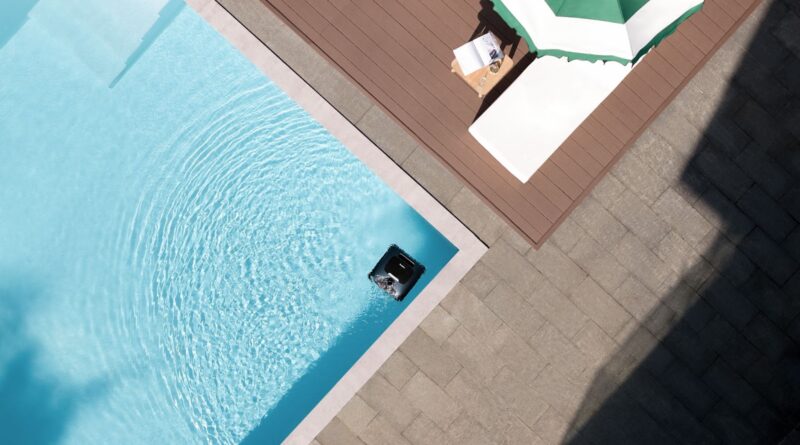Robot Pool Cleaner Tips: How Do I Detect a Leak in My Pool?
It’s easy for a shimmering pool to mask a quiet problem — water loss. A question that many pool owners ask is, how can I find a leak in my pool without tearing the whole thing apart? If you are already using a robot pool cleaner or pool cleaning robot, then you are ahead of the game. These clever tools can help you detect clues of a hidden leak and also keep your pool clean.
Leaks not only waste water but they also destroy your pool’s foundation and cost you more to maintain. But learning how to identify them, and repairing them promptly, is essential to maintaining your pool — and your investment — in great shape.
Early Signs of a Pool Leak
Before we jump into detecting a leak, watch out for warning signs that you might have one:
- Your pool is losing 1/4 inch or more of water each day
- You see wet areas on the pool deck
- The skimmer or pool vacuum is sucking air bubbles
- There has been an unexpected increase on your water bill
Even the regular cleaning habits of a pool robot cleaner (or pool vacuum robot) can show you something suspicious—unless you’re used to detecting unusual sediment formations, air pockets, or tile displacement, they’re all notification that a system may be leaking.
The Bucket Test: An Easy First Step
- One of the simplest ways to check for a leak is to do the bucket test:
- Get a bucket of pool water.
- Set it on the pool step with the water level in the bucket equal to the pool level just outside of the bucket.
Exit your robot pool cleaner, filter, and pump.
- Wait 24–48 hours and test water levels against one another.
- If the pool water level went down more than the bucket water, then you probably have a leak.
- Inspection of Equipment and Surfaces
- For Now, just ensure all pool parts are operating:
- Check for cracks in the plaster or liner.
- Look around the vacuum for the pool ports or skimmer lines
- Check pipe connections and the pool booster pump
- Look for wet soil around plumbing
Vacuum with a Maytronics pool cleaner, robot pool or wall climbing pool cleaner can ensure the way is clear to see any cracks or holes in your pool.
Leveraging Technology to Aid in Leak Detection
The higher tier cleaning devices such as the Beatbot AquaSense 2 Pro, Beatbot AquaSense 2 Ultra, and Beatbot AquaSense 2 will do more than just brush your pool. These smart sensors can alert you to unusual readings in pressure or water flow — early indicators of a leak.
Matched with a pool robot, and you’ll lower your pool’s surface debris that may cover small tears or worn spots in the liner. If you are battling algae or cloudy water, use a pool vacuum for algae to assist in identifying discoloration near a suspected leak area.
When to Call a Professional
If you’ve walked through those checks and still suspect a leak, it’s time to call in a pool technician. There are special tools for pressure testing leaks in the underground plumbing. Pros can also recommend if you need to acid wash your pool or empty an inground pool without pump for easier access.
- Maintain Your Edge and Stave Off Aging
- The most effective approach to avoid leaks is regular attention. Here are steps to follow:
- Keep your pool clean with automatic cleaners or robotic pool vacuum
- Skim and monitor water levels weekly.
- Check filter pressure, and pool’s booster pump.
- Keep your chemicals in balance
For additional advice, learn how robotic pool cleaners work and our DIY pool leak detection tips.
Conclusion: The Importance of Spotting Leaks Early With you get to enjoy a save on target leaks early.
OK, so how can I tell if my pool is leaking? Pairing regular inspections with smart tools such as a robot pool cleaner will help you catch any issues early and keep your pool in top-notch condition. E-Commerce Shopping for invention: Many top pool-cleaning companies make robots, like Beatbot, with options that perform well and cut down on the time spent taking care of our pools while also allowing us to find out what is lurking beneath the surface before it gets any worse.


Pingback: Evoqua Water Technologies Solutions for Clean Water Systems - hints for connections